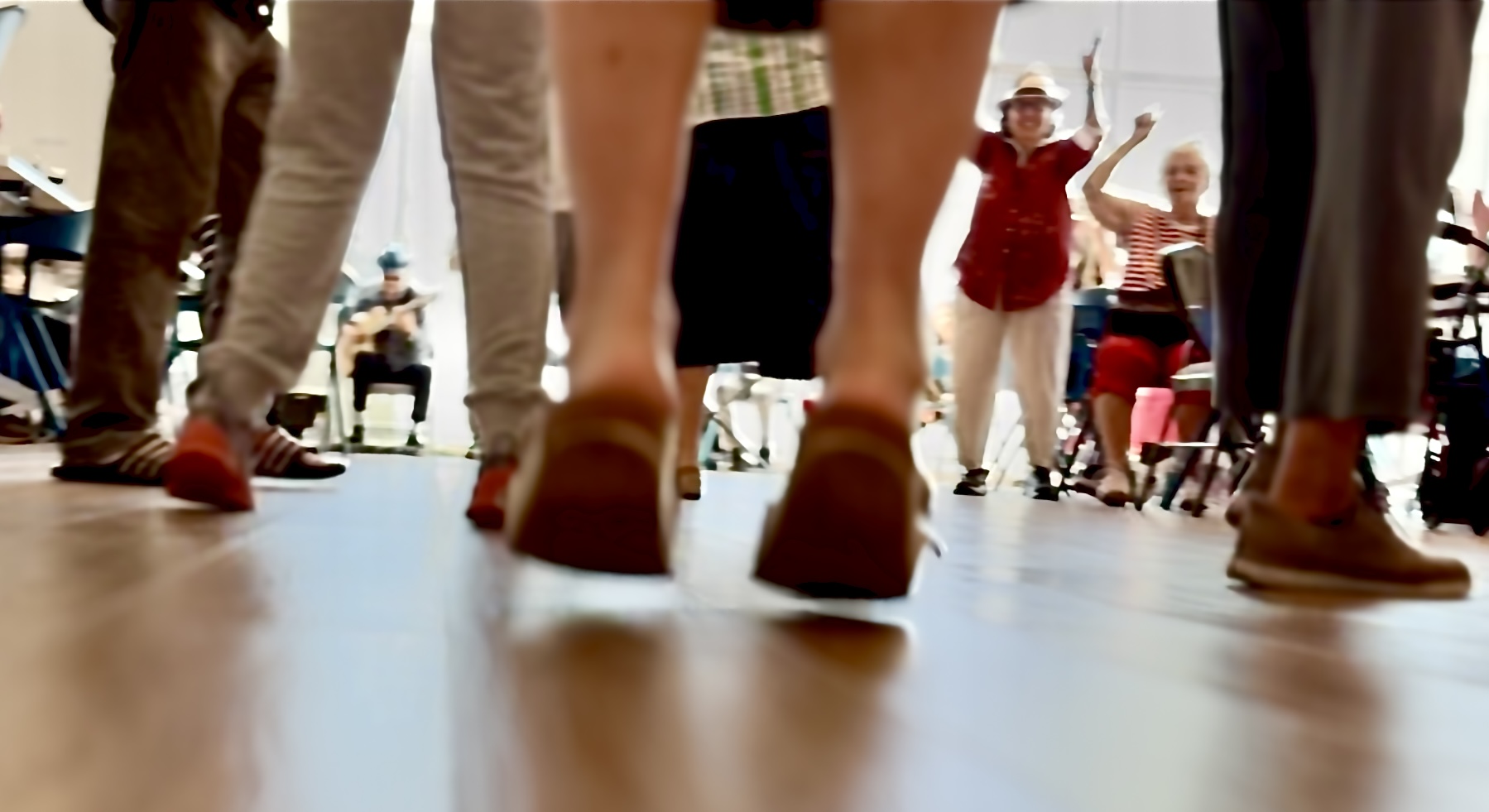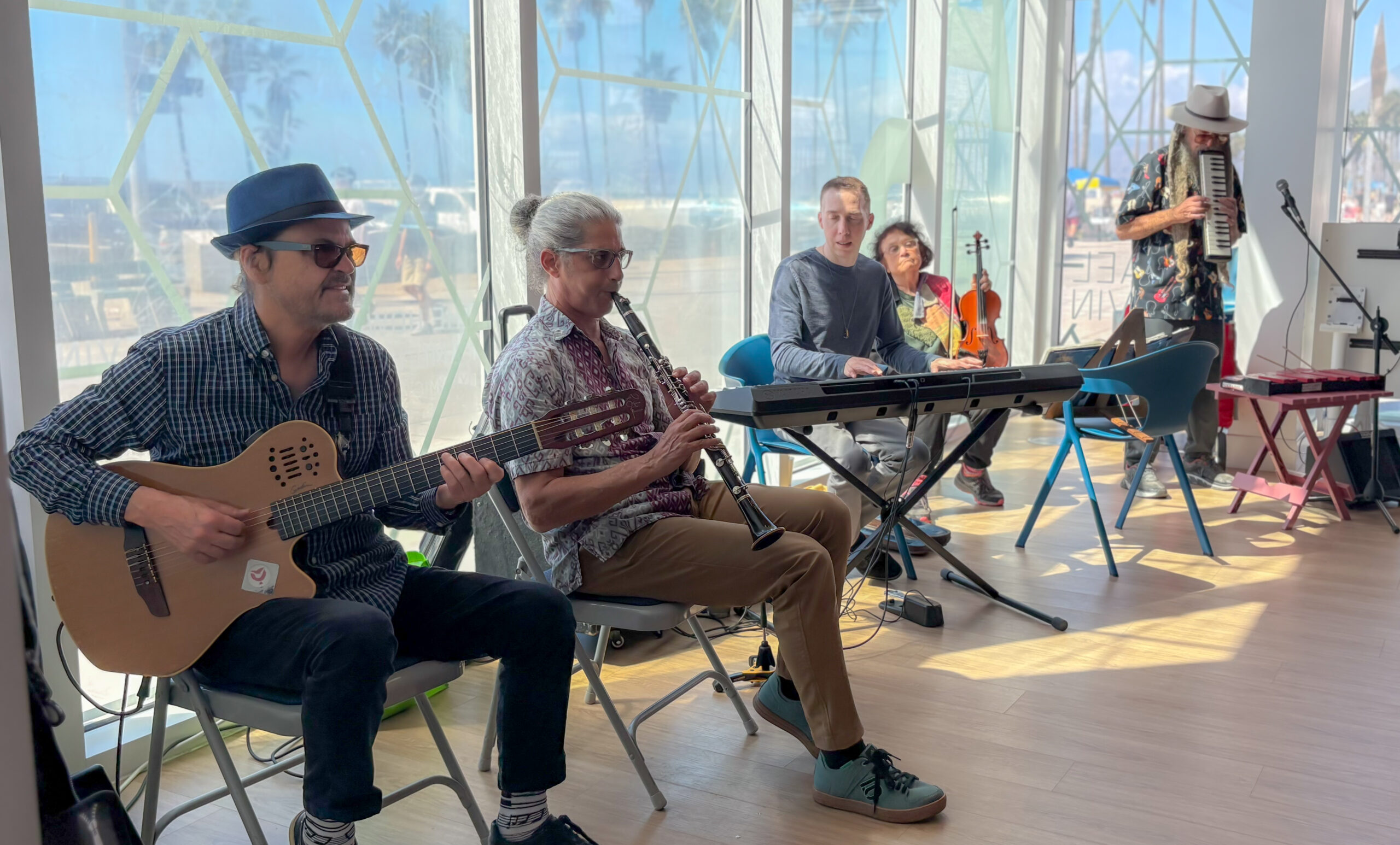The Healing Power of Klezmer

At Jewish Family Service LA, the shared language of rhythm and memory fills the air whenever Klezmer musicians visit our senior centers and Café Europa social programs for survivors of the Holocaust. The moment the music begins, the energy in the room shifts. Hands clap. Feet tap. Shoulders sway.
“Music is like a time machine. You turn up the volume, and we go back in time,” says Gustavo Bulgach, a longtime performer, educator and founder of the Institute for Klezmer and Jewish Music. He has grown his ensemble, Klezmer Juice, across many JFSLA programs.
After immigrating to the United States, Gustavo carried with him the vibrant tango-inspired sounds—melding Latin warmth and syncopation with an Ashkenazi lilt that feels both familiar and new. His music bridges the rhythms of the Americas with the soul of Jewish tradition.

JFSLA regularly welcomes Klezmer artists to perform, but Gustavo’s approach is different. He invites participants to join the band, turning a concert into a community circle. Marty, otherwise known as Moshe, a natural entertainer, opens his suitcase of instruments—recorder, harmonica, accordion—and fills the room with rhythm and joy. In addition, violinist Karina adds a graceful thread of melody, her bow dancing in sync with the smiles around her. Together, they blur the line between audience and orchestra.
Music, research shows, is more than entertainment. It awakens memory and strengthens body and spirit. Listening to familiar songs can lower blood pressure, ease depression, and stimulate parts of the brain that store language and long-term memory. Dancing—even in a chair—boosts balance and circulation. Singing expands breathing and releases tension. For JFSLA’s Holocaust survivors and older adults, this is more than nostalgia; it’s medicine for the soul.
“When we play an old melody,” Gustavo explains, “someone remembers their father’s voice or a wedding before the war. The music wakes something that never died—it was just waiting to be heard again.”
That’s the essence of Klezmer—the centuries-old Jewish folk tradition born in Eastern Europe and shaped by migration, hardship, and joy. Traveling musicians once carried these tunes from village to village, blending them with Romani, Slavic, and Ottoman influences. When Jewish immigrants brought Klezmer to America, it mingled with jazz and blues—the shared expression of pain turned into hope. Some call it the Jewish blues of the soul: music that laughs while it cries.
The same duality is what moves many of JFSLA’s seniors to dance. Each clarinet wail or fiddle run contains both anguish and triumph, reminding everyone that survival itself is a kind of music. “Live Klezmer music brings life to our senior community. It wakes them up and reminds them there’s beauty in this tough world—there is music. Music they can feel in their bodies and in their hearts,” observed Shayna Panitz, the center’s Activities Coordinator, “The music rejuvenates.”
“Music is like a time machine.
You turn up the volume, and we go back in time.”
— Gustavo Bulgach
Gustavo’s own sound carries another layer of heritage. Raised in Argentina by Ukrainian and Russian grandparents, he grew up surrounded by melody and motion. “In Argentina, music tells our stories,” he says. The warmth of Latin rhythm weaves easily into the Jewish songbook, reflecting the same resilience, faith, and celebration that unite both cultures. Gustavo straddles both worlds: “What Argentina added to Klezmer is more sweet than sour.”
When live music is shared at any of JFSLA’s senior centers, it’s not just a performance—it’s connection, healing, and community in motion. Conflicts dissolve, memories roll sweet, and laughter rises, while everyone—musicians, guests, and volunteers—find themselves part of one circle.
The music of yesterday becomes the medicine of today—keeping memory alive, body moving, and spirit strong.